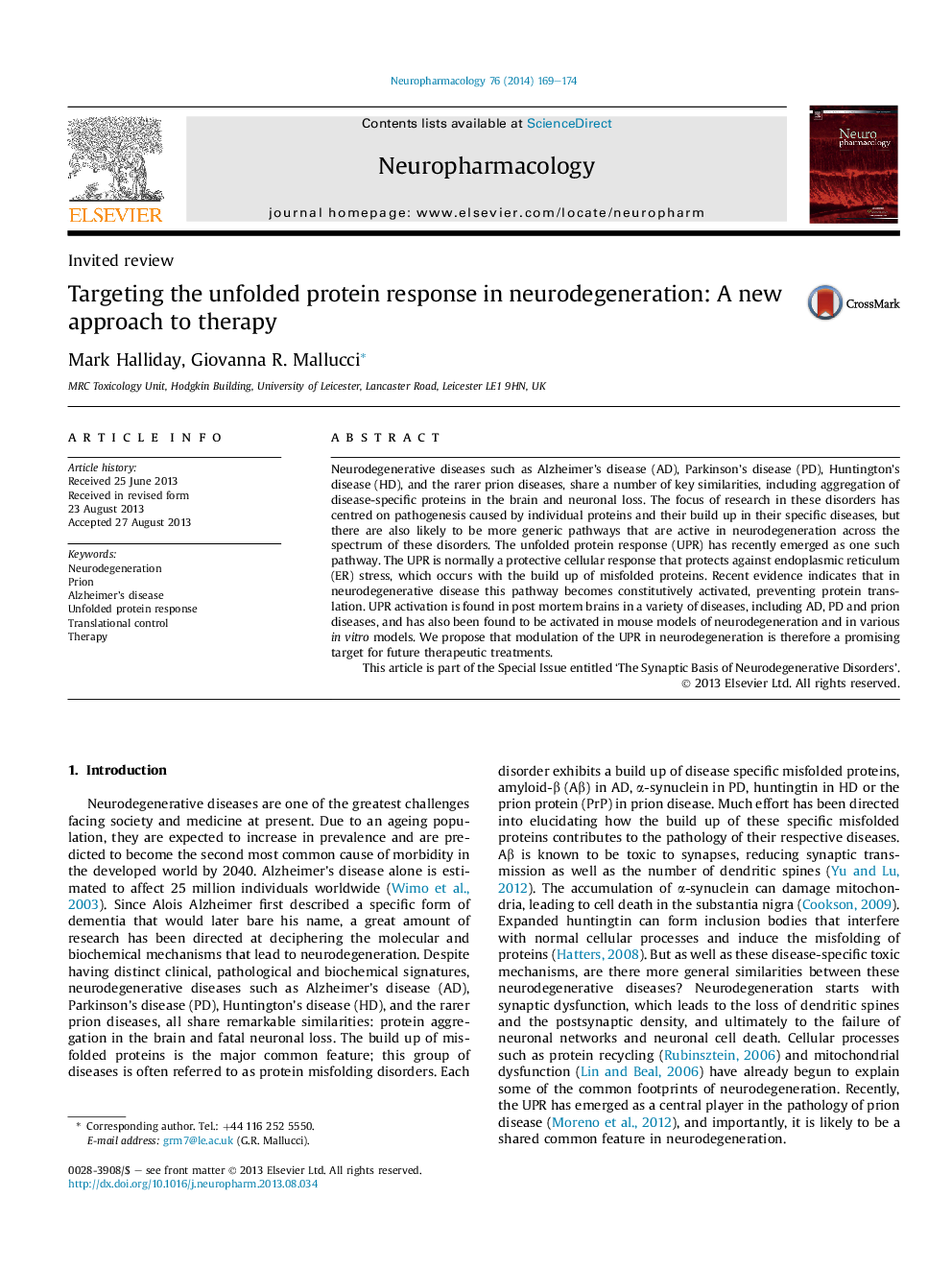| کد مقاله | کد نشریه | سال انتشار | مقاله انگلیسی | نسخه تمام متن |
|---|---|---|---|---|
| 2493400 | 1115503 | 2014 | 6 صفحه PDF | دانلود رایگان |
• The emergence of the unfolded protein response (UPR) as a central mechanism in neurodegeneration.
• Dysregulated UPR results in catastrophic translational failure leading to neuronal death.
• Manipulation of this pathway is neuroprotective and gives new targets for therapy in neurodegenerative diseases.
Neurodegenerative diseases such as Alzheimer's disease (AD), Parkinson's disease (PD), Huntington's disease (HD), and the rarer prion diseases, share a number of key similarities, including aggregation of disease-specific proteins in the brain and neuronal loss. The focus of research in these disorders has centred on pathogenesis caused by individual proteins and their build up in their specific diseases, but there are also likely to be more generic pathways that are active in neurodegeneration across the spectrum of these disorders. The unfolded protein response (UPR) has recently emerged as one such pathway. The UPR is normally a protective cellular response that protects against endoplasmic reticulum (ER) stress, which occurs with the build up of misfolded proteins. Recent evidence indicates that in neurodegenerative disease this pathway becomes constitutively activated, preventing protein translation. UPR activation is found in post mortem brains in a variety of diseases, including AD, PD and prion diseases, and has also been found to be activated in mouse models of neurodegeneration and in various in vitro models. We propose that modulation of the UPR in neurodegeneration is therefore a promising target for future therapeutic treatments.This article is part of the Special Issue entitled ‘The Synaptic Basis of Neurodegenerative Disorders’.
Journal: Neuropharmacology - Volume 76, Part A, January 2014, Pages 169–174
